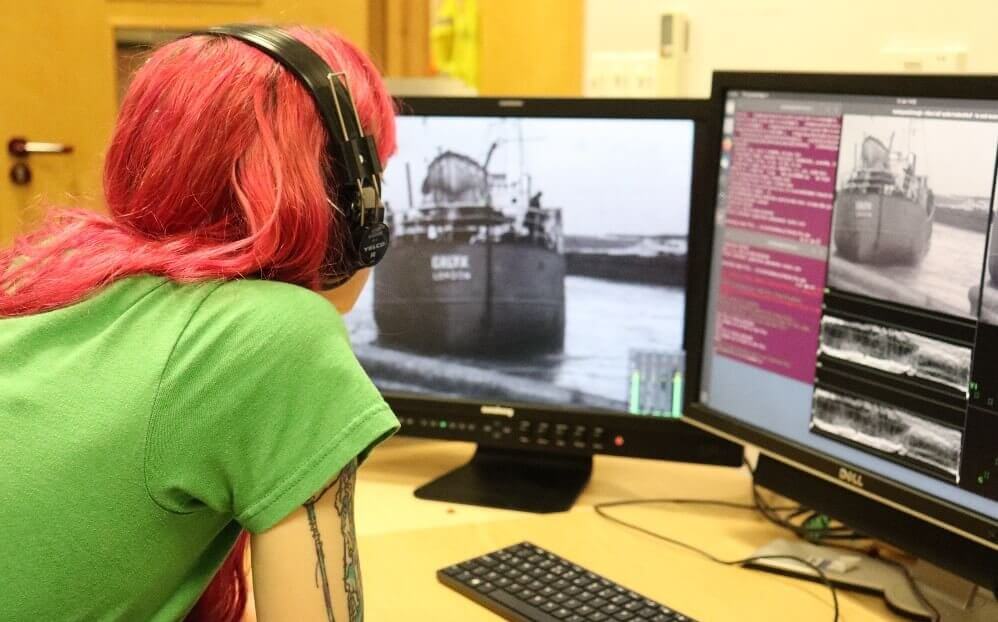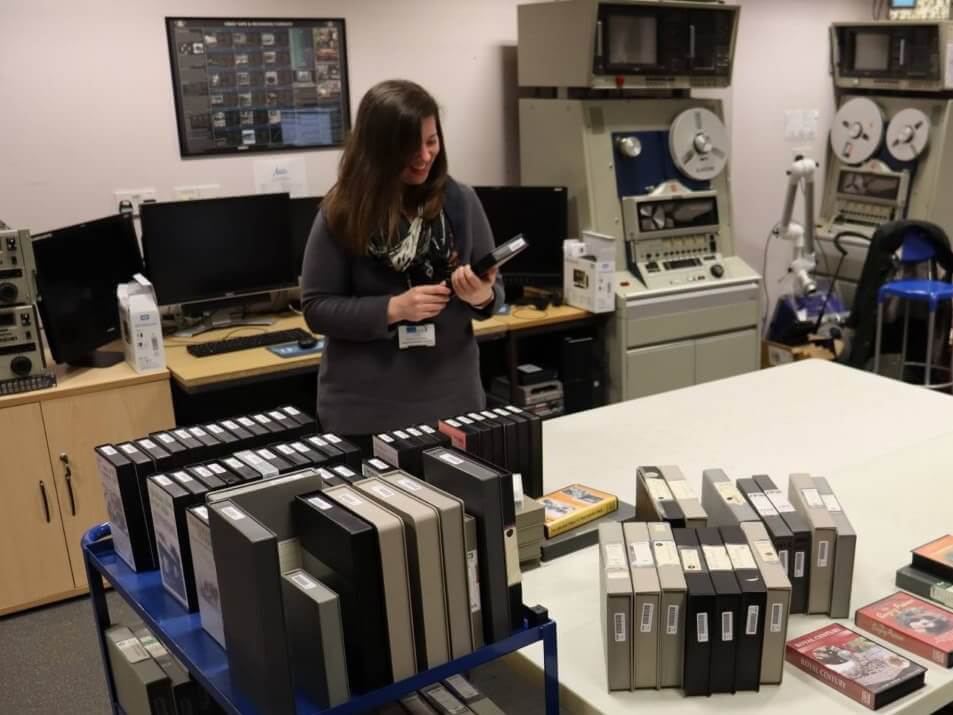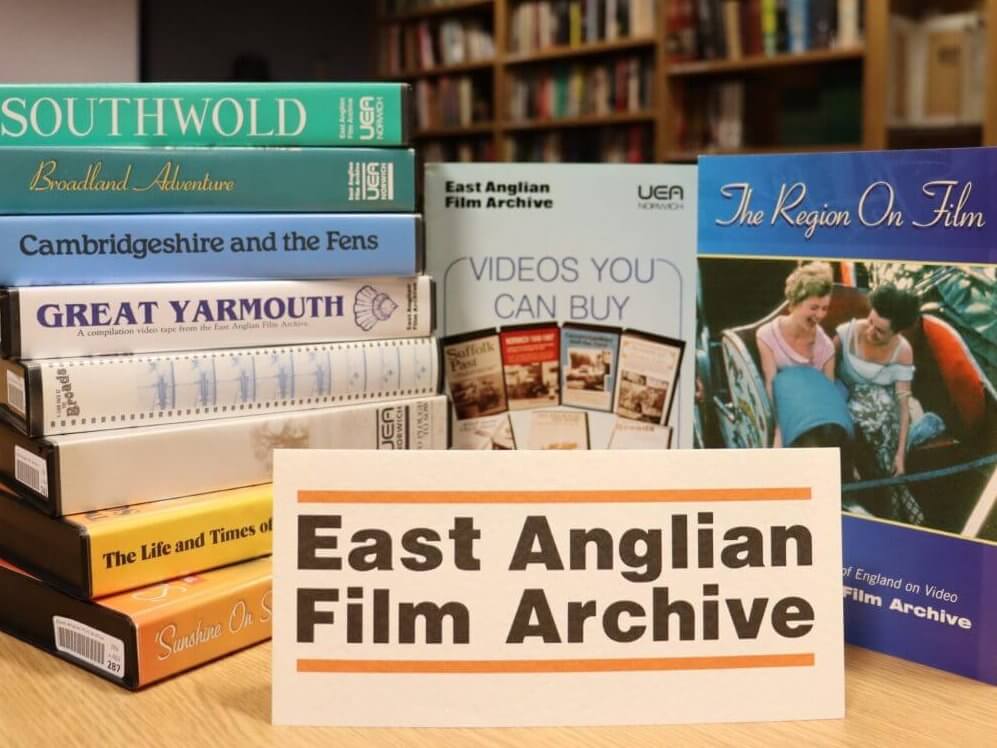
Post-graduate researcher Dr. Olivia Croyle shares the technological challenges and fascinating stories encountered during the EAFA Home Viewing project.
Olivia joined EAFA in the summer of 2023 to lead on the EAFA Home Viewing project, which aimed to digitise archival video tape compilations of local interest produced by EAFA between the 1980s and early 2000s.
Here Olivia reflects on the challenges presented by changing technologies, and some of the fascinating local stories she and a group of UEA student volunteers uncovered.
Home Viewing
“Are you asking how old I am?” Rebecca, one of the student volunteers working on the EAFA Home Viewing project, responds as I hand her a VHS and ask how familiar she is with the format.
For younger readers VHS (Video Home System) tapes are a video format played back on a VCR (Video Cassette Recorder) device. To me, this is the format of childhood movies rewound and replayed until I knew the dialogue by heart and the picture was streaked with stress-induced wear.
Home viewing has changed a lot in the last twenty years. For many the experience of watching a film at home no longer includes the paraphernalia of case inserts and playback devices. Even when I own a copy of a film, I will seek it out on a streaming service to save myself a dusty rummage through my DVDs.
The VHS compilations we’re digitising, produced in the 1980s and 1990s by EAFA to be sold to the public, are now archive objects in their own right. Their packaging typifies 90s-does-nostalgia appeal. Sepia-tinted film stills are set against vibrant background colours: avocado-bathroom-suite green, parma violet grey, pillar box red.

Dr. Olivia Croyle inspects a VHS tape.
Video-Tape Obsolescence
The fact that in a film archive video tapes are often mentioned in the same sentence as the word obsolescence doesn’t make me feel any younger. VHS tapes are just one of the video formats that are at risk. We are also digitising the master versions of the compilations on BetacamSP and U-matic formats.
The heavy yet slim BetacamSP tapes and clunky U-matic cassettes were professional formats most often used in TV production during the 1980s and 1990s. Their respective playback devices, with their light-up buttons and dials, wouldn’t look out of place on the mission control panels of a retro sci-fi movie.
They might have been designed to look futuristic but, in fact, these technologies are far from future proof. The video tape playback devices we’re using have long since been out of production, which is why film archives are prioritising video tape formats for digitisation.

A selection of titles and archival materials from the EAFA Home Viewing Collection.
Mixtapes for East Anglia
The compilations themselves are also of their time, produced before the internet made it possible for archives to share their collections with the public beyond their repositories. At the time, these tapes allowed EAFA to reach out beyond their regular film shows at events across East Anglia. EAFA curated the VHS compilations specially “for home use”.
These tapes are by, for, and of the people of East Anglia, and preserve personal histories and stories for which there are few other sources. Watching the compilations during digitisation, I’ve not only seen the Singing Postman’s music videos (and learned some choice expressions in Norfolk dialect), but heard from the filmmaker in the video’s introduction about this unlikely music sensation and his career. I’ve seen traditional fishing equipment put to work bringing in the daily catch at Lowestoft and repurposed by the community for sports day obstacle courses.
A lot of the footage used in the compilations comes from local newsreels that were shown in cinemas from their earliest days in the 1900s until the emergence of local television news. We often think of the cinema as being a place to escape everyday life, yet these films fulfilled a demand for communities to see themselves reflected on the big screen.
The compilations inevitably capture other instances of obsolescence. One production about now disused windmills is aptly titled And Now They Rest. In the Southwold video, a clip showing the town’s unusual narrow-gauge railway is immediately followed by footage of the last train leaving the station in 1929, and a video of citizens celebrating the unveiling of a plaque fifty years later. It’s startling how quickly technologies become curiosities, but it’s reassuring to watch the people of East Anglia facing these changes and celebrating heritage together.
Header image: a student volunteer takes part in tape digitisation as part of the EAFA Home Viewing Project.
"The video tape playback devices we’re using have long since been out of production, which is why film archives are prioritising video tape formats for digitisation."
"These tapes are by, for, and of the people of East Anglia, and preserve personal histories and stories for which there are few other sources."



